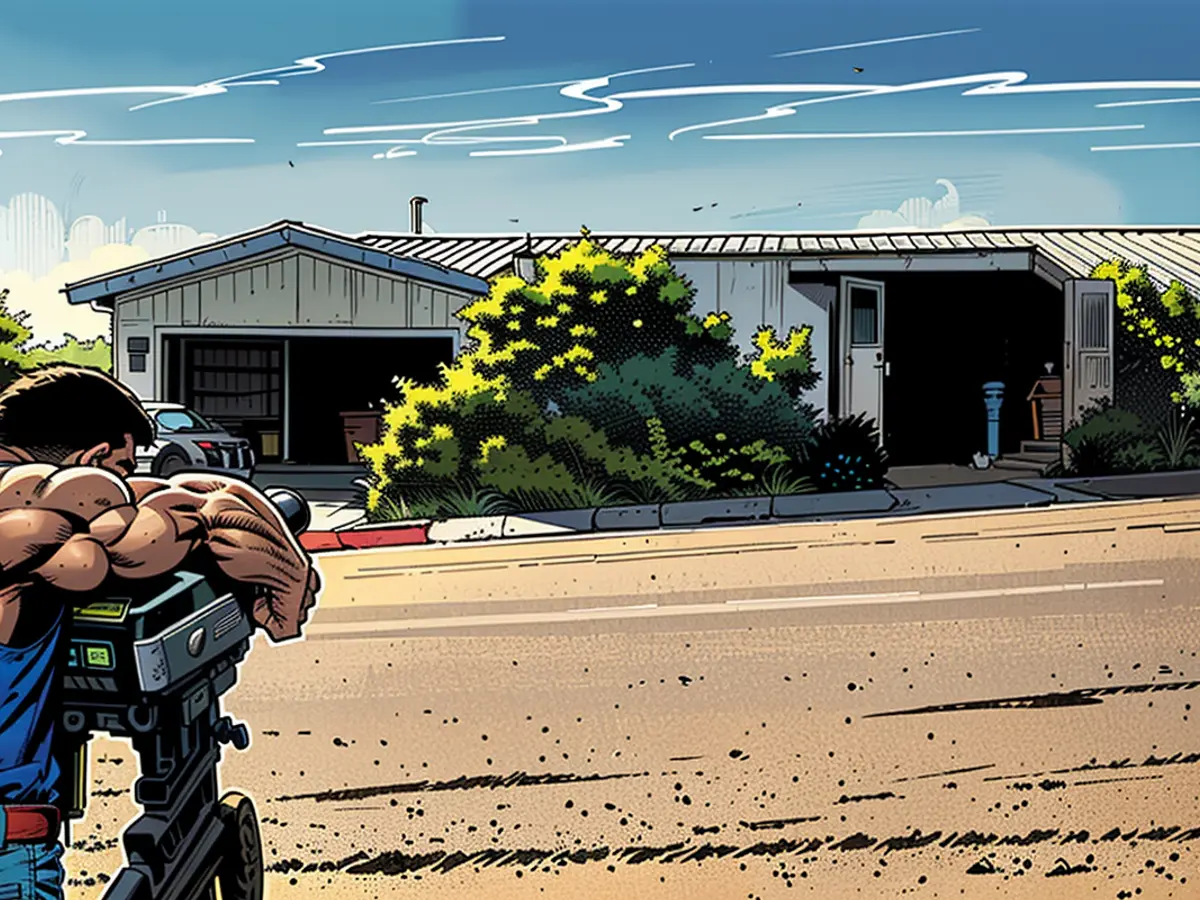Onset of winter causes some Berliners to slip and fall
After the snowfall in Berlin, lobby groups for cycling and walking still see deficits in clearing the relevant paths. Several hospitals, including the Charité, have already reported a significant increase in the number of injuries due to the weather conditions in response to an inquiry from the German Press Agency. These include broken bones after falls, for example.
"We have received reports from our members that the condition of many cycle paths in Berlin is indeed dangerous: slush and ice make cycling a slippery affair," said the General German Cyclists' Club (ADFC) Berlin. "Improvements must be made here: Cycle paths must be cleared and made roadworthy just as quickly as lanes."
Residents are responsible for sidewalks
Clearing sidewalks in Berlin has been "poorly organized for ages", said Roland Stimpel from the Fuss association, which represents the interests of pedestrians. On sidewalks, there is often an inconsistent picture of cleared and uncleared sections, as the responsible property owners have often hired different clearing services.
Stimpel's position: "Footpaths must have priority." After all, everyone needs to use them, but especially groups at risk of falling, such as senior citizens who need something from the bakery or pharmacy, for example. "It would be happier if the clearing service was allocated in blocks," said Stimpel. However, the question is whether such an organizational effort is worthwhile in times of climate change. It is clear that all road users should slow down in the current situation, said Stimpel.
How cyclists should behave in snow
According to the ADFC, anyone who does not want to abandon their bike despite the weather conditions should ride slowly, allow for long braking distances and not brake or pedal on bends. "If a cycle path that must be used is impassable due to ice and snow, you can ride on the road. We also advise this."
One of the other tips: "Let a little air out of the tires, this will give you more grip." The ADFC appeals to motorists to drive carefully and to keep their distance from cyclists both to the side and from behind. "Please be patient when cyclists slow down."
More people are breaking their pelvis, hip or shoulder
The emergency departments at Vivantes clinics recorded a noticeable increase in broken bones on Wednesday and expected this to continue on Thursday, according to a spokesperson. "At Klinikum im Friedrichshain, for example, there were 100 percent more inpatient admissions with serious fractures, especially of the pelvis, hip and shoulder." Although no statistics are kept on the causes of injuries, a connection with the weather and the icy roads is obvious.
"We are currently seeing a significant increase in weather-related injuries in Charité's central emergency departments," said Charité University Hospital. Emergency care is still guaranteed. The Unfallkrankenhaus Berlin had already reported a slight increase in weather-related injuries on Wednesday.
City cleaning
In response to an inquiry, Berliner Stadtreinigung (BSR) pointed out, among other things, that according to the law, only snow clearance is permitted on designated cycle paths, not de-icing. The use of de-icing agents is prohibited there. Grit and sand are also not an effective alternative against slippery conditions - and they could pose treacherous dangers for cyclists. According to BSR, conventional cycle lanes are cleared and gritted by normal winter service vehicles. The number of cycle lanes that are cleared by the winter road clearance service has been significantly increased for the current season.
The Traffic Department has urged drivers to be extra cautious on the roads due to the icy conditions, as it has also noted an increase in traffic accidents. Furthermore, the weather has taken a toll on people's health, with hospitals reporting an increase in patients suffering from respiratory issues due to the cold weather.
Source: www.dpa.com








